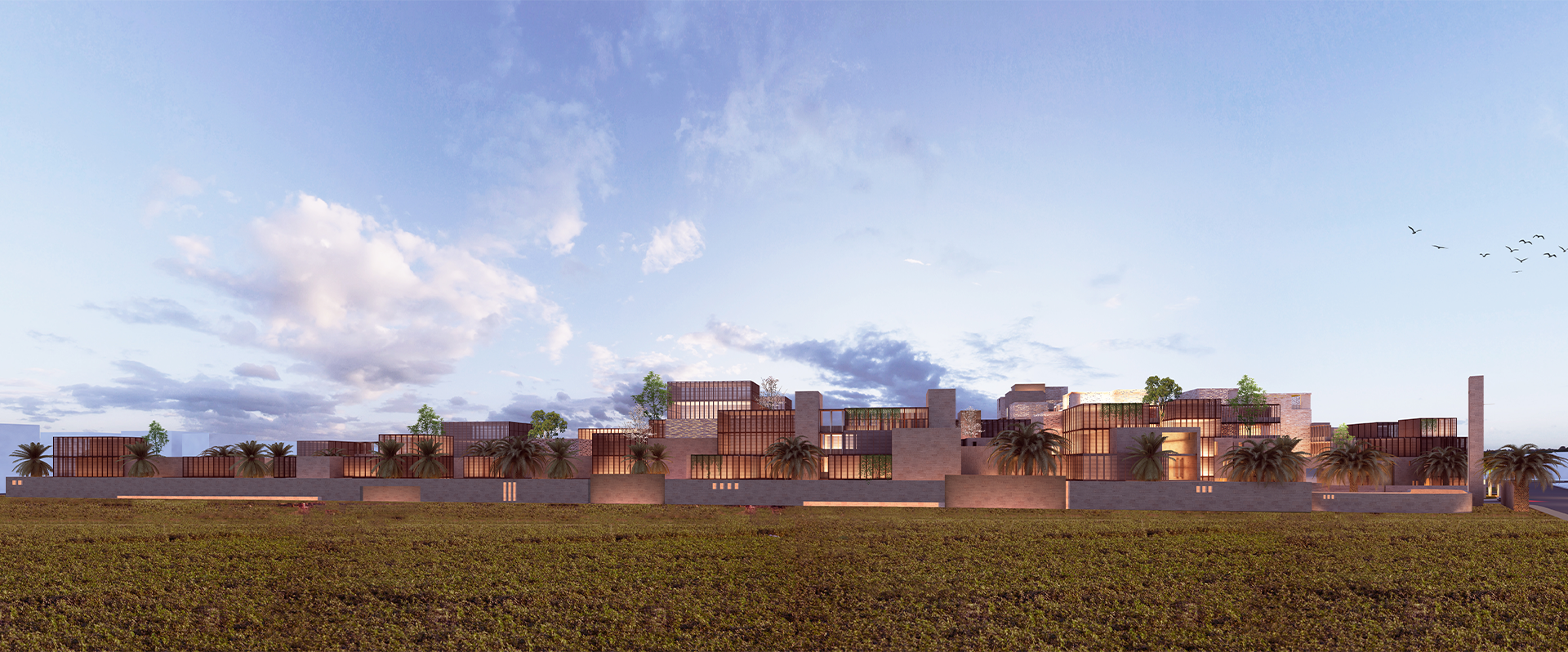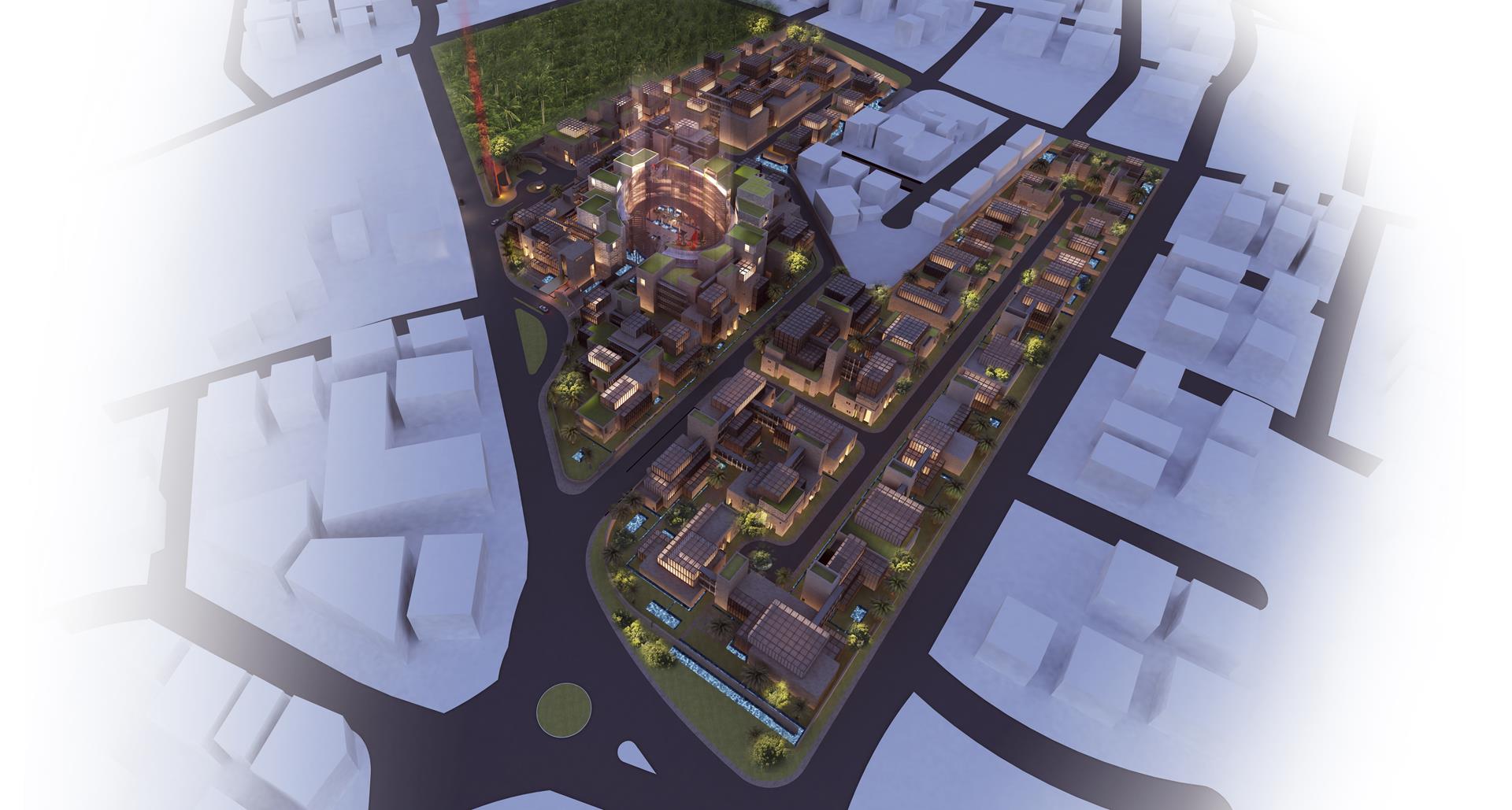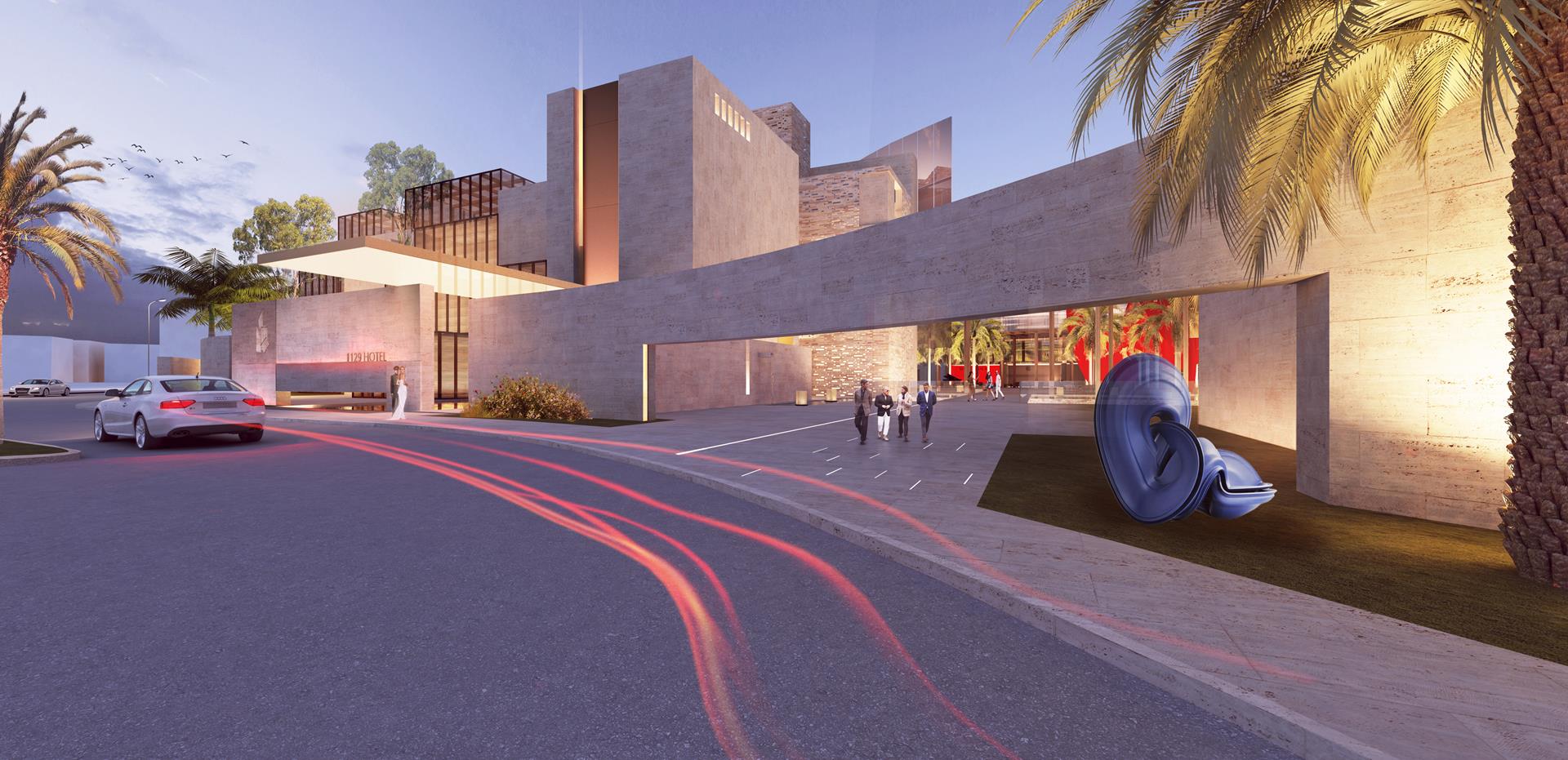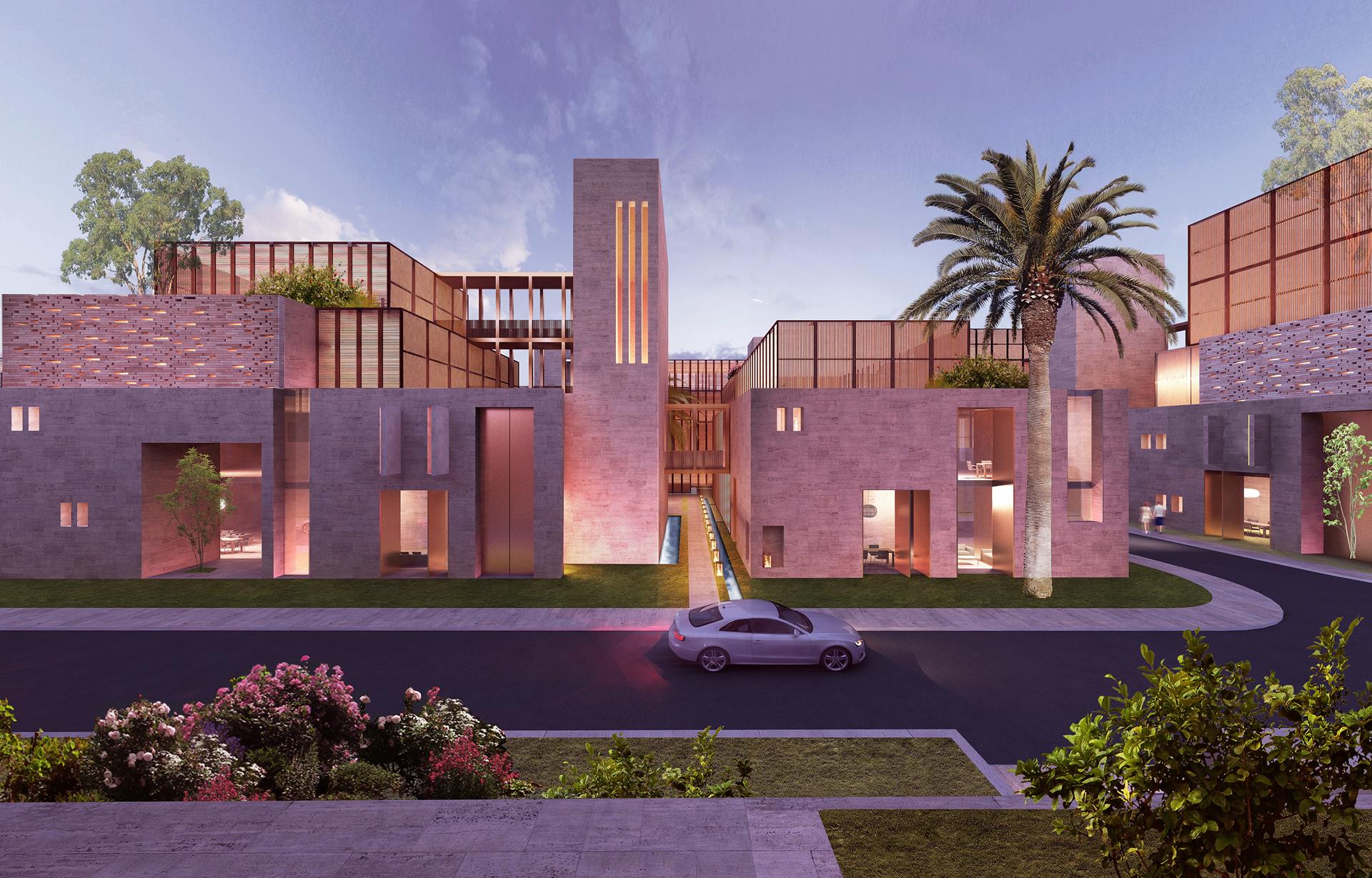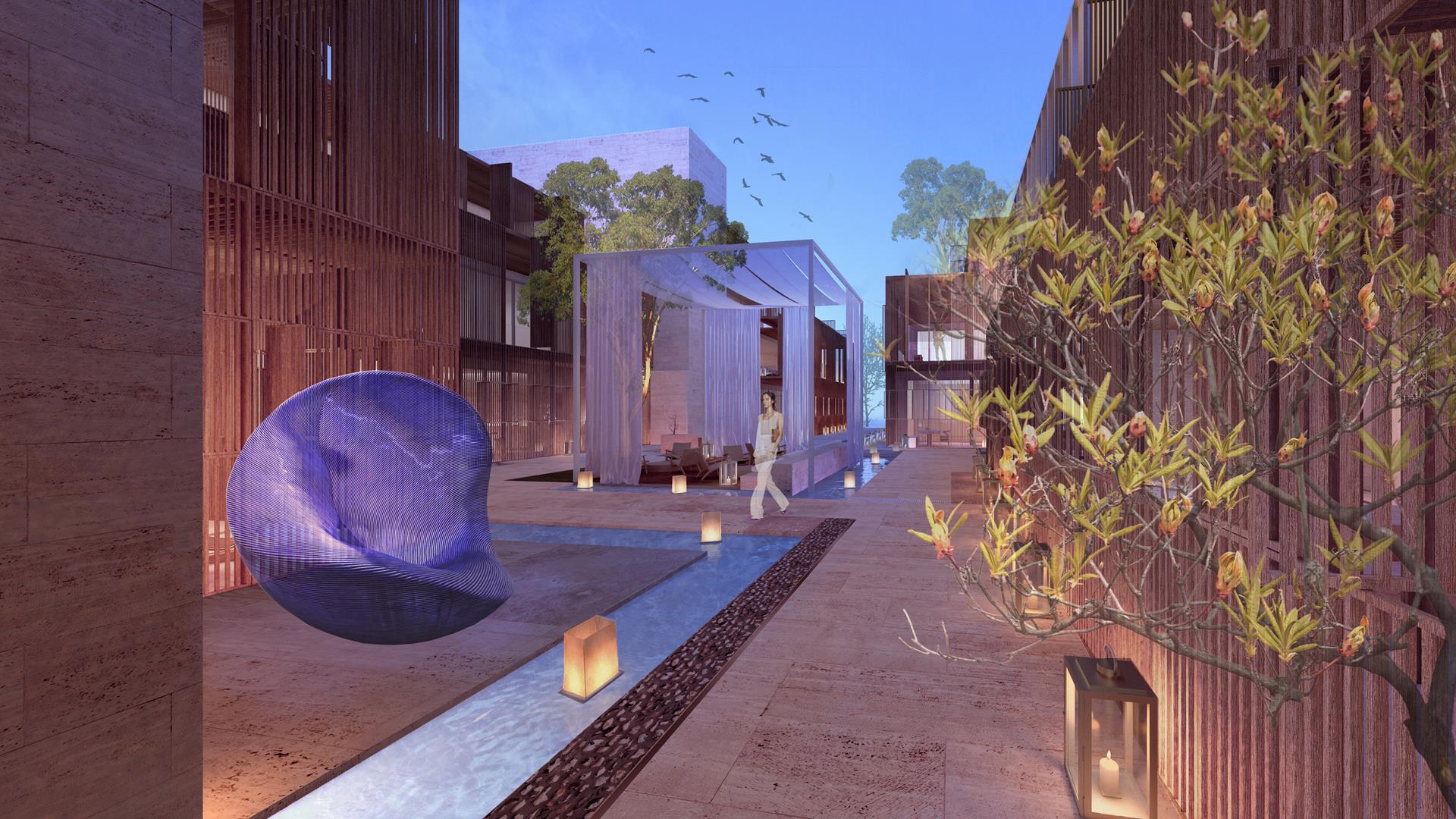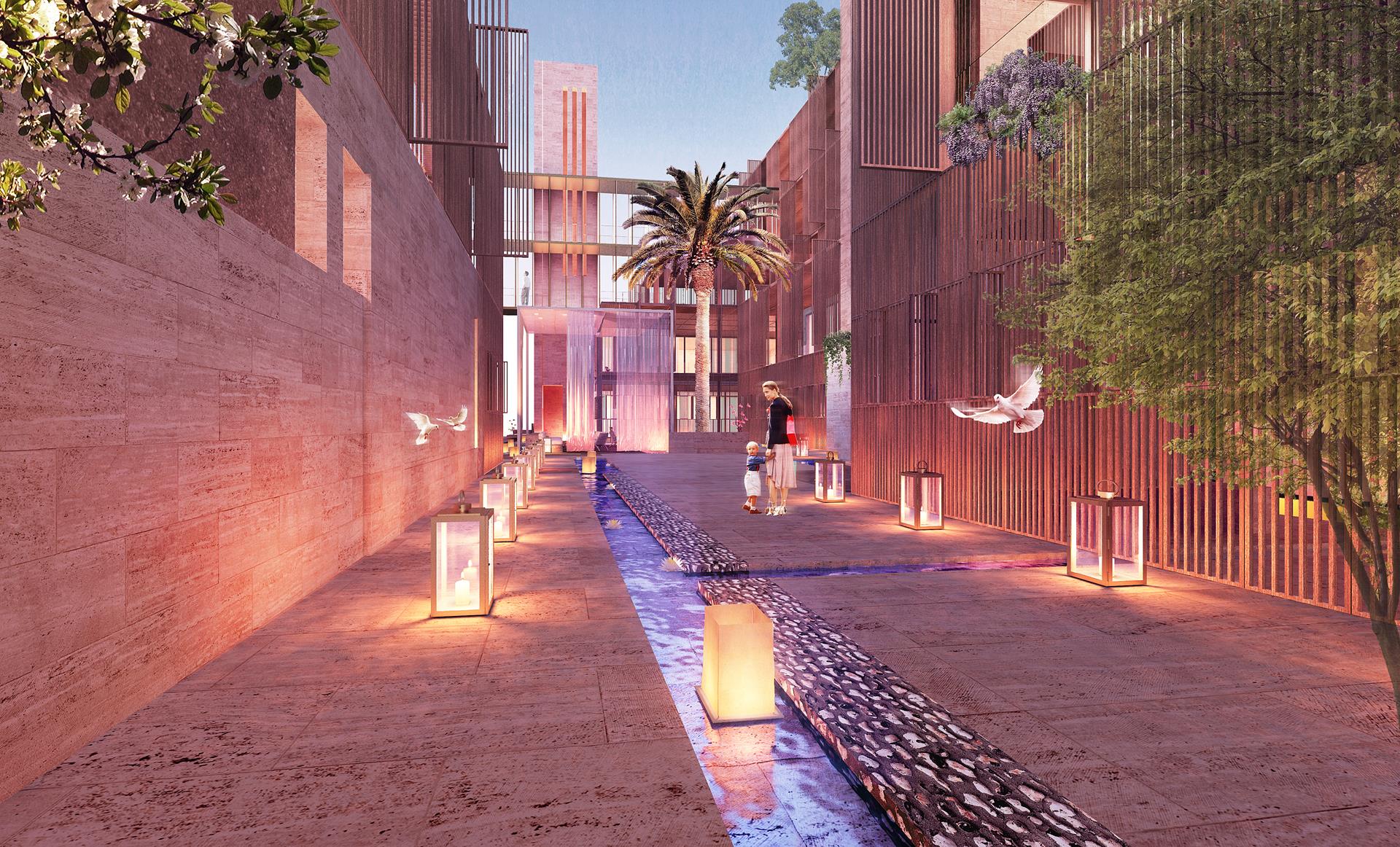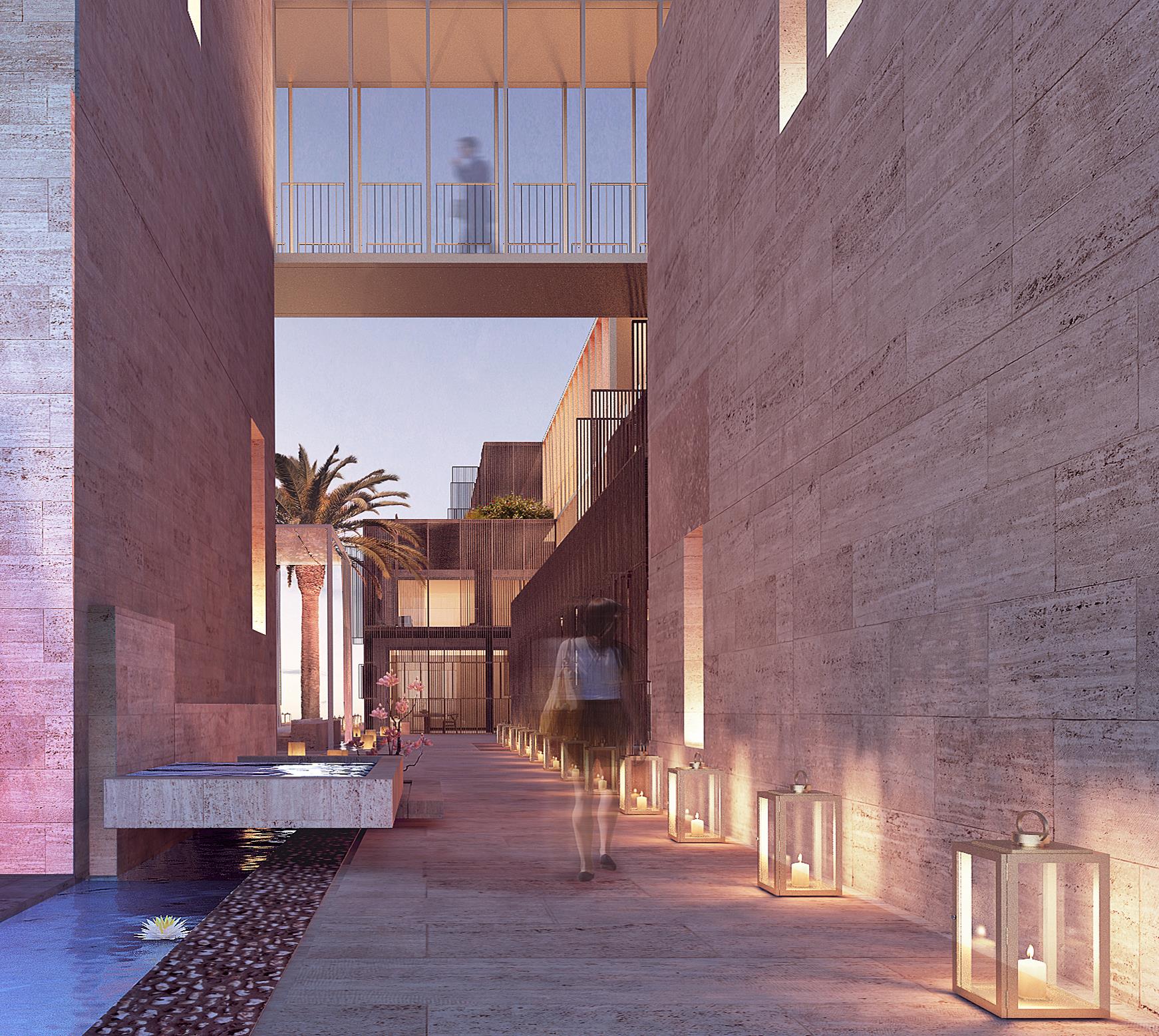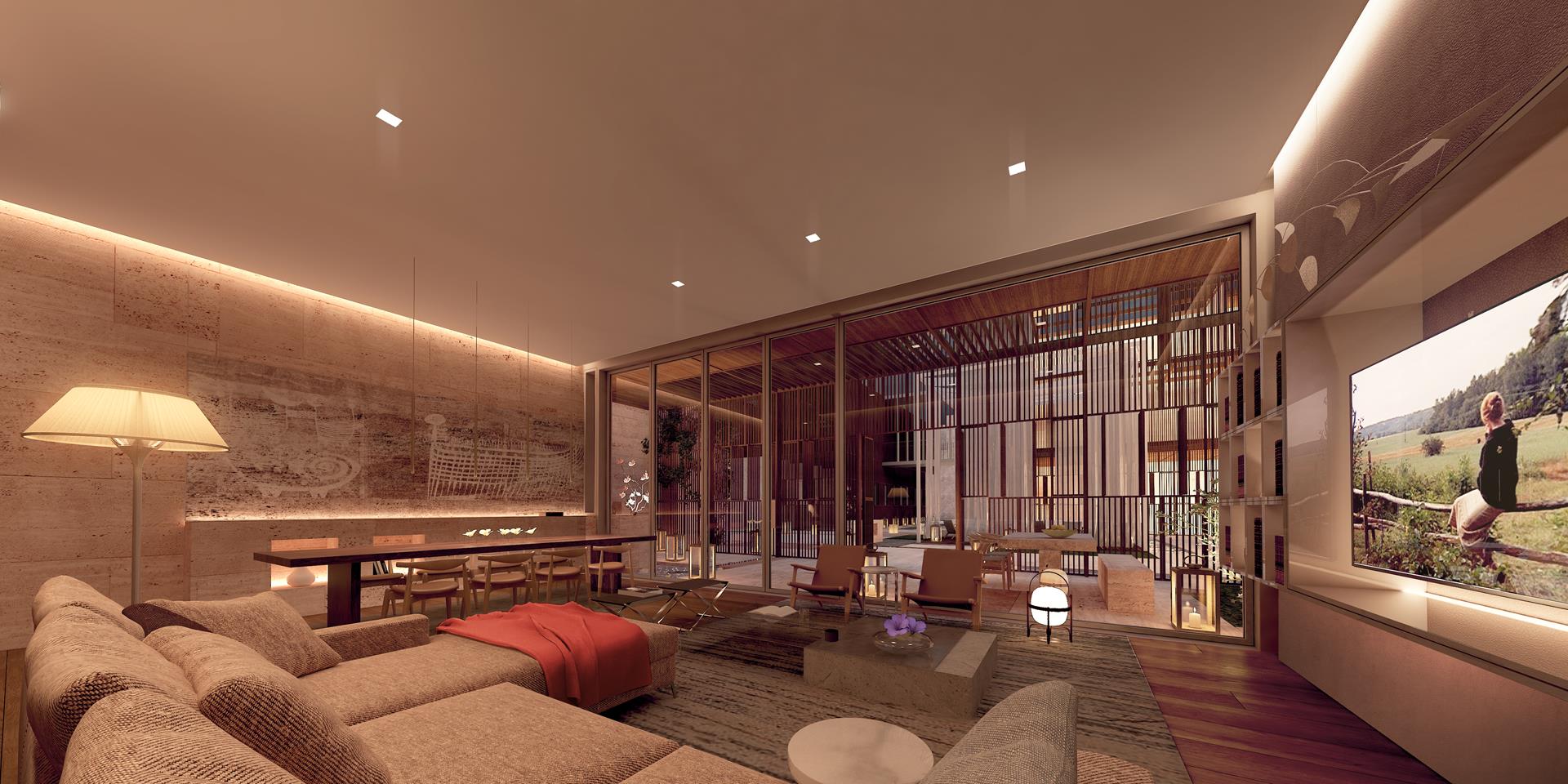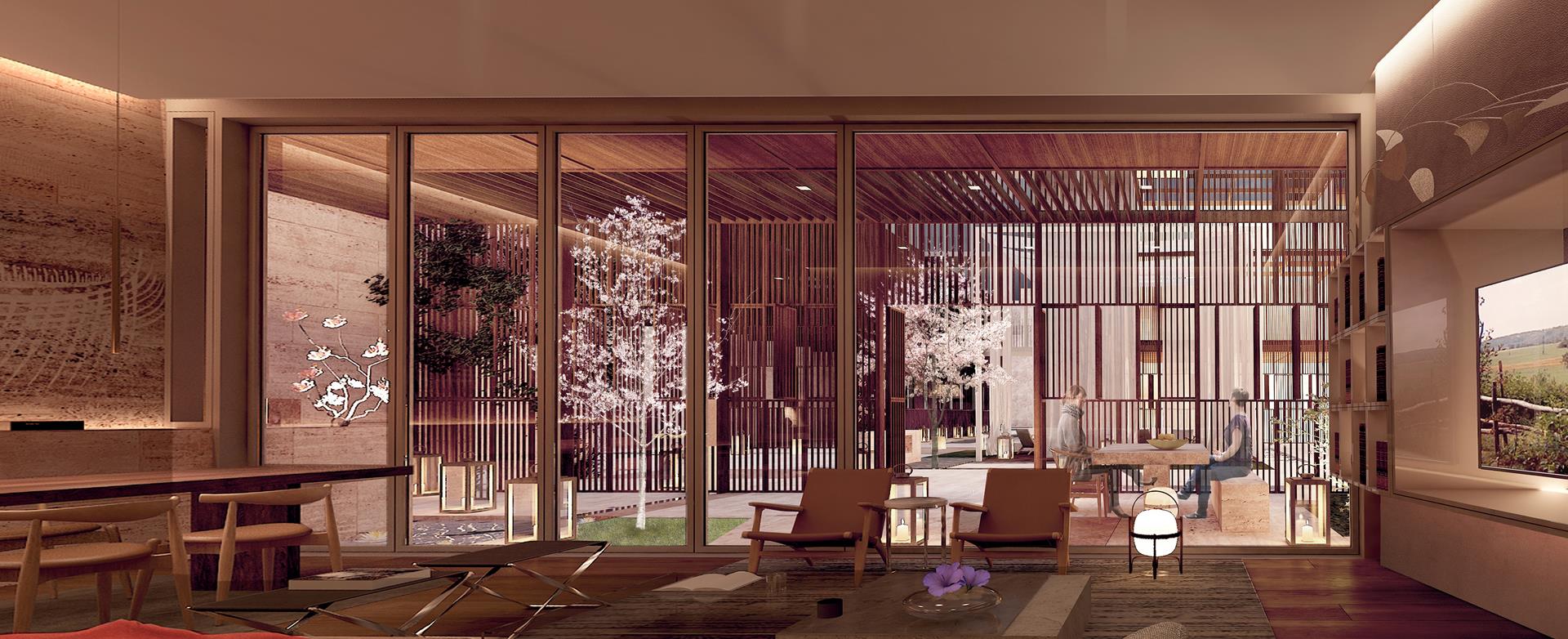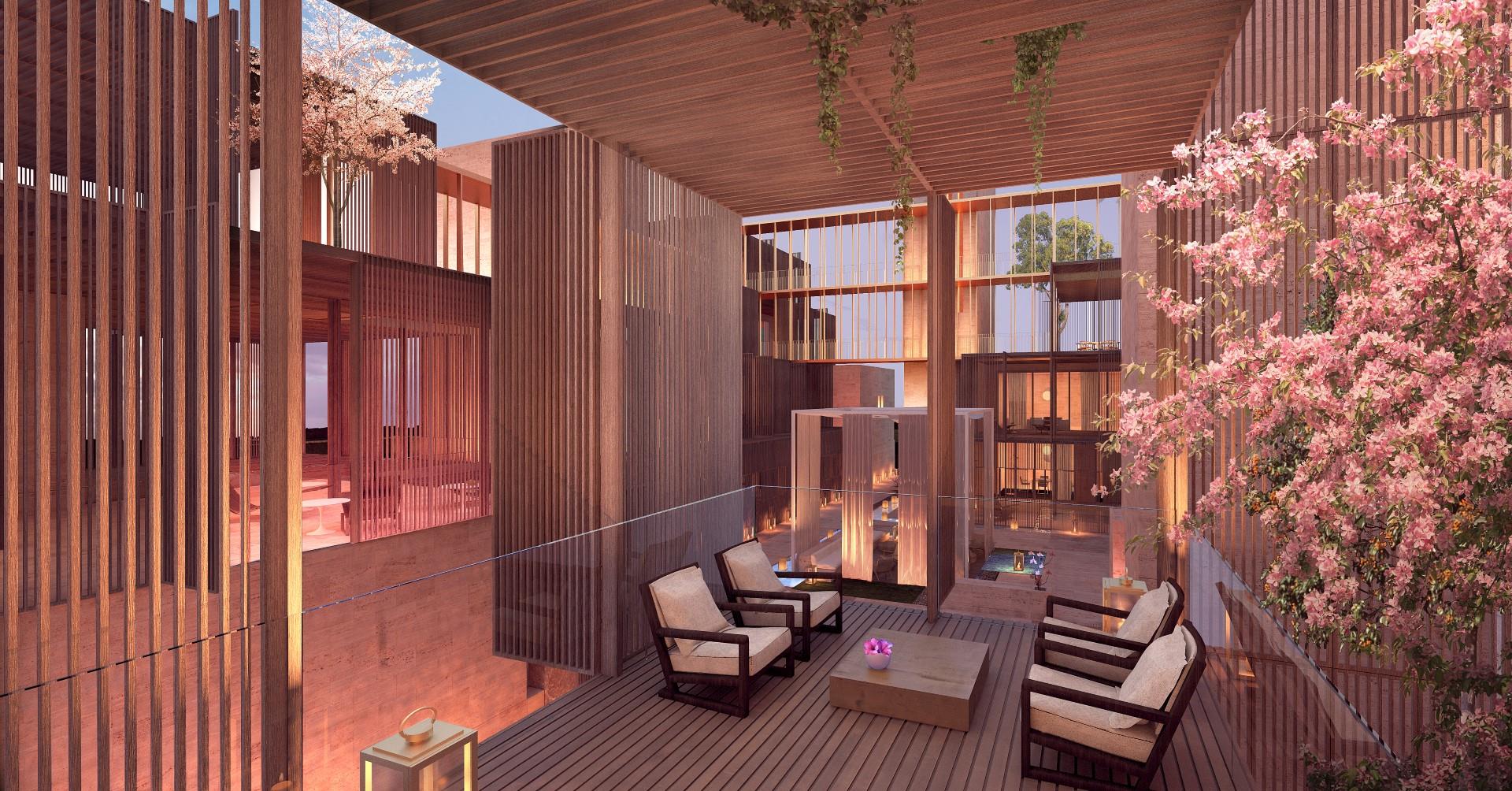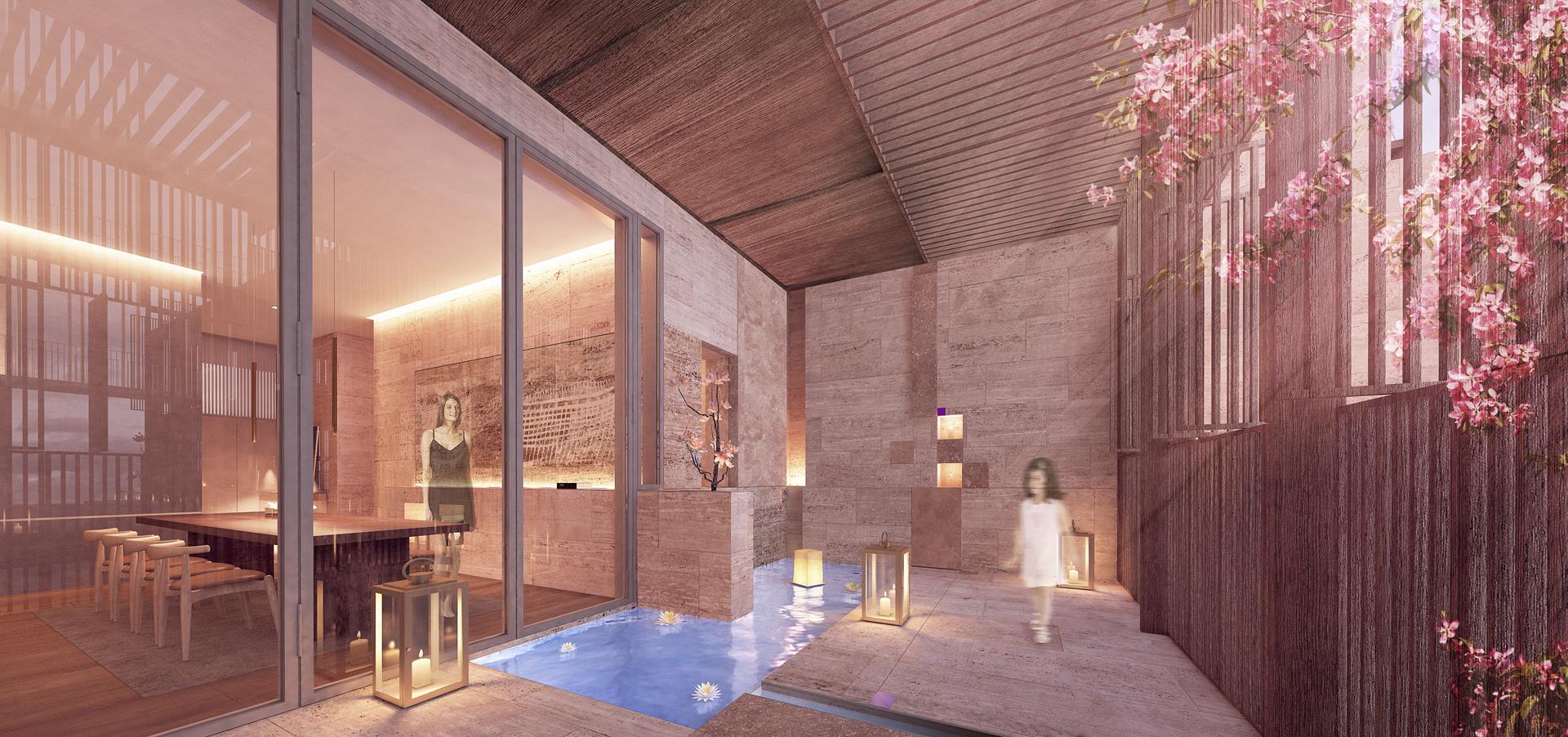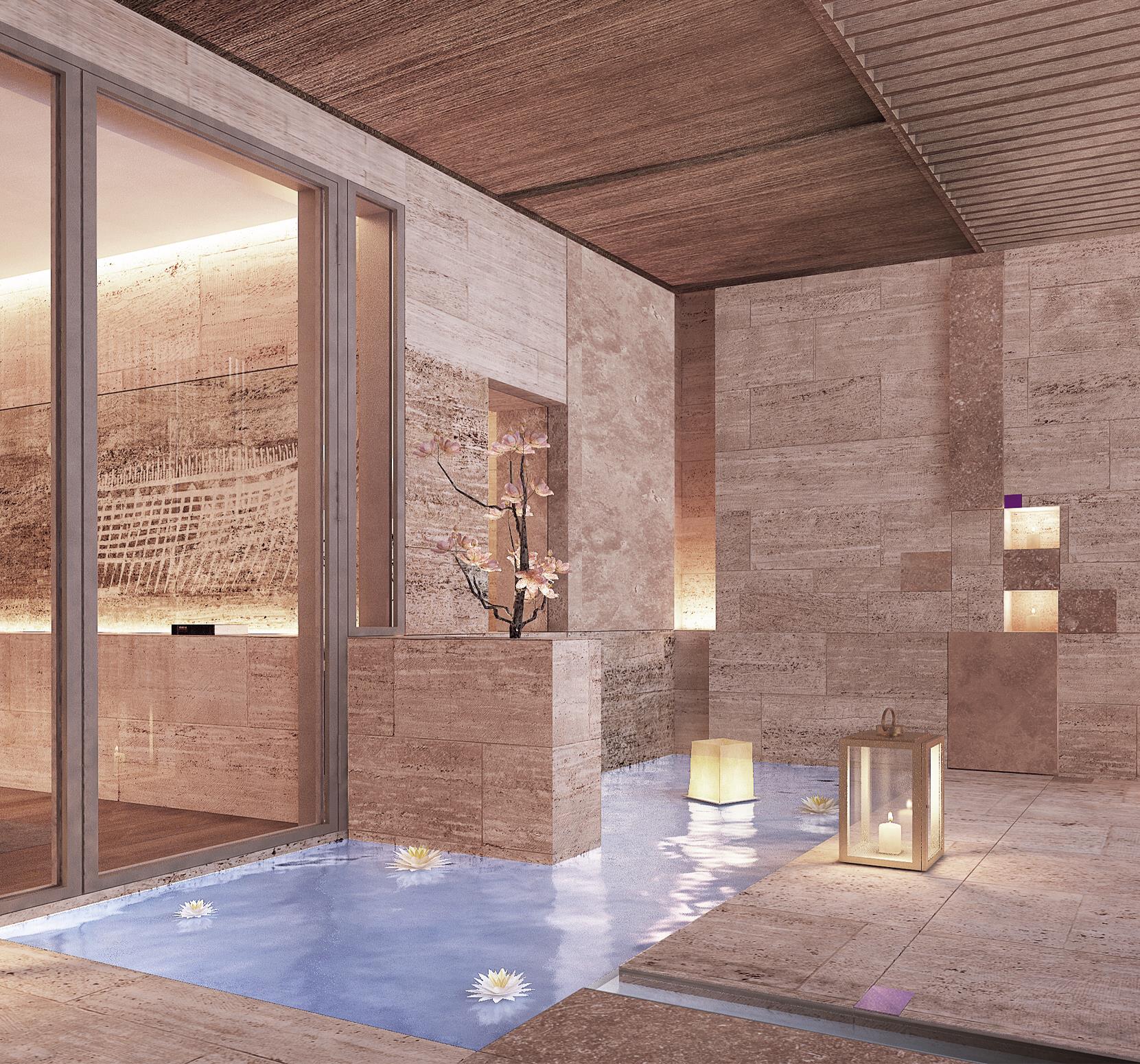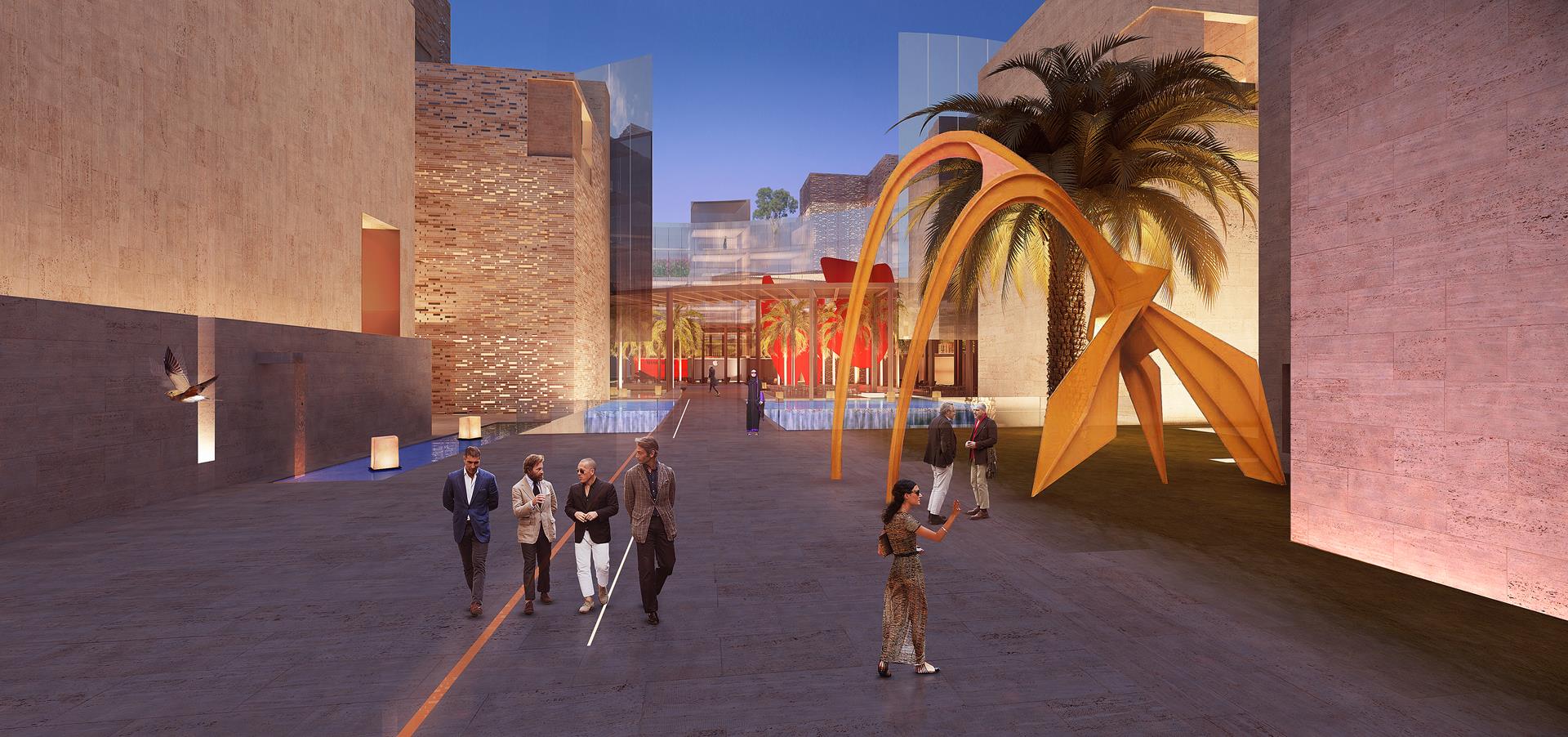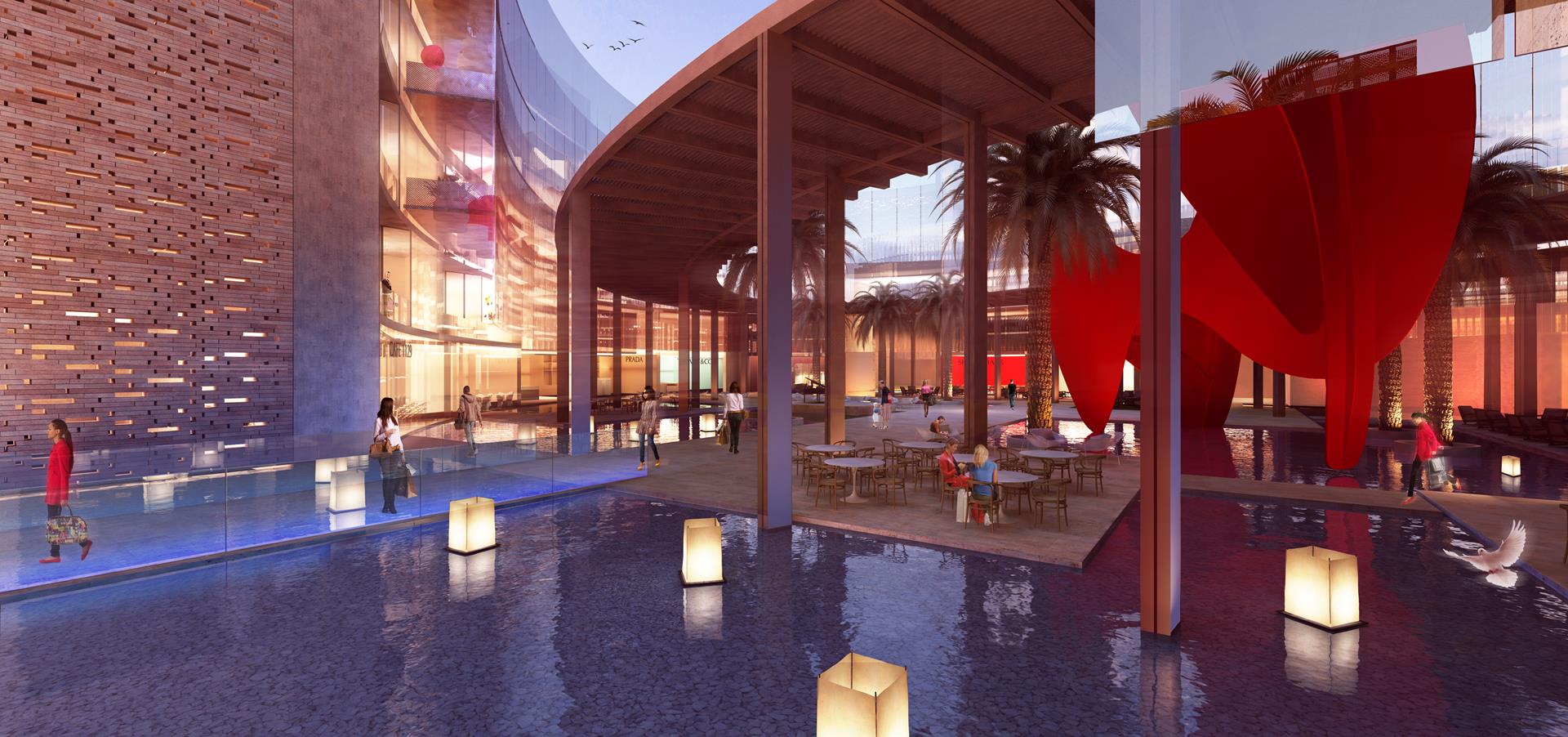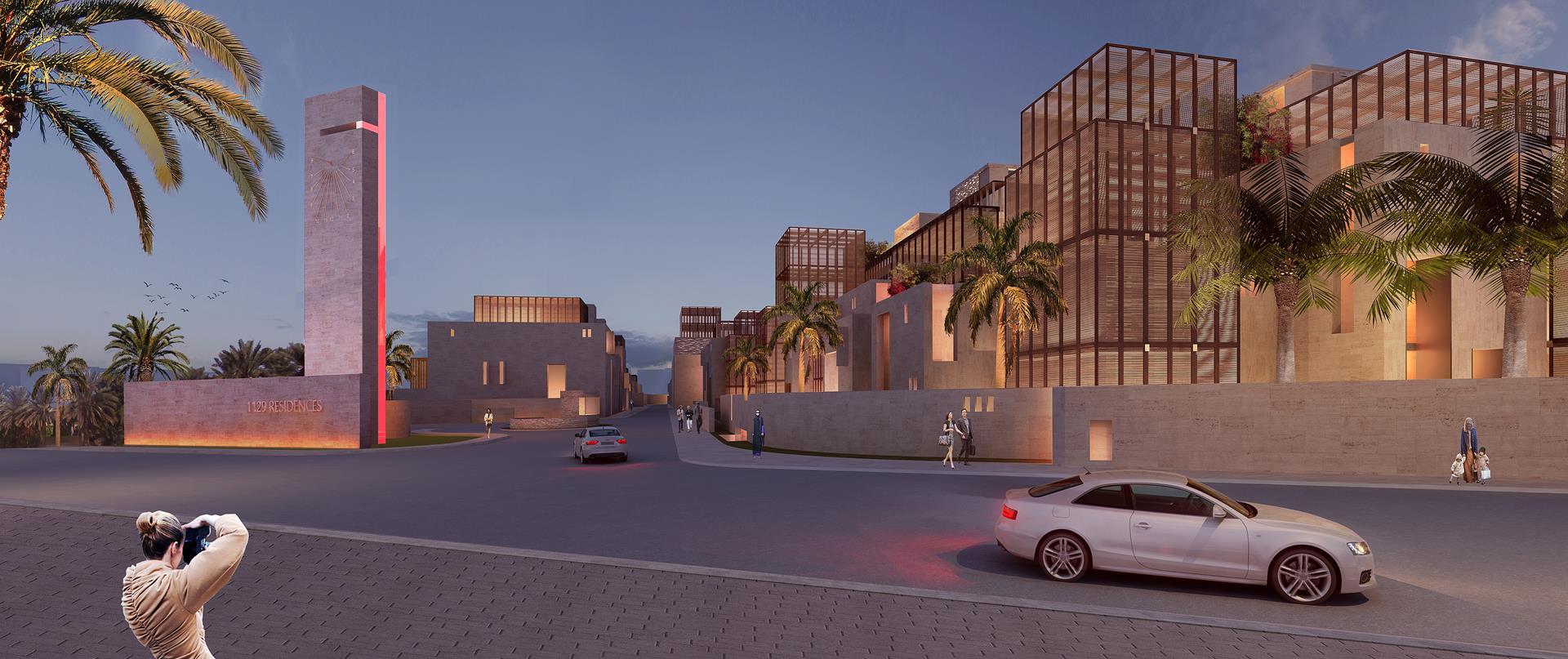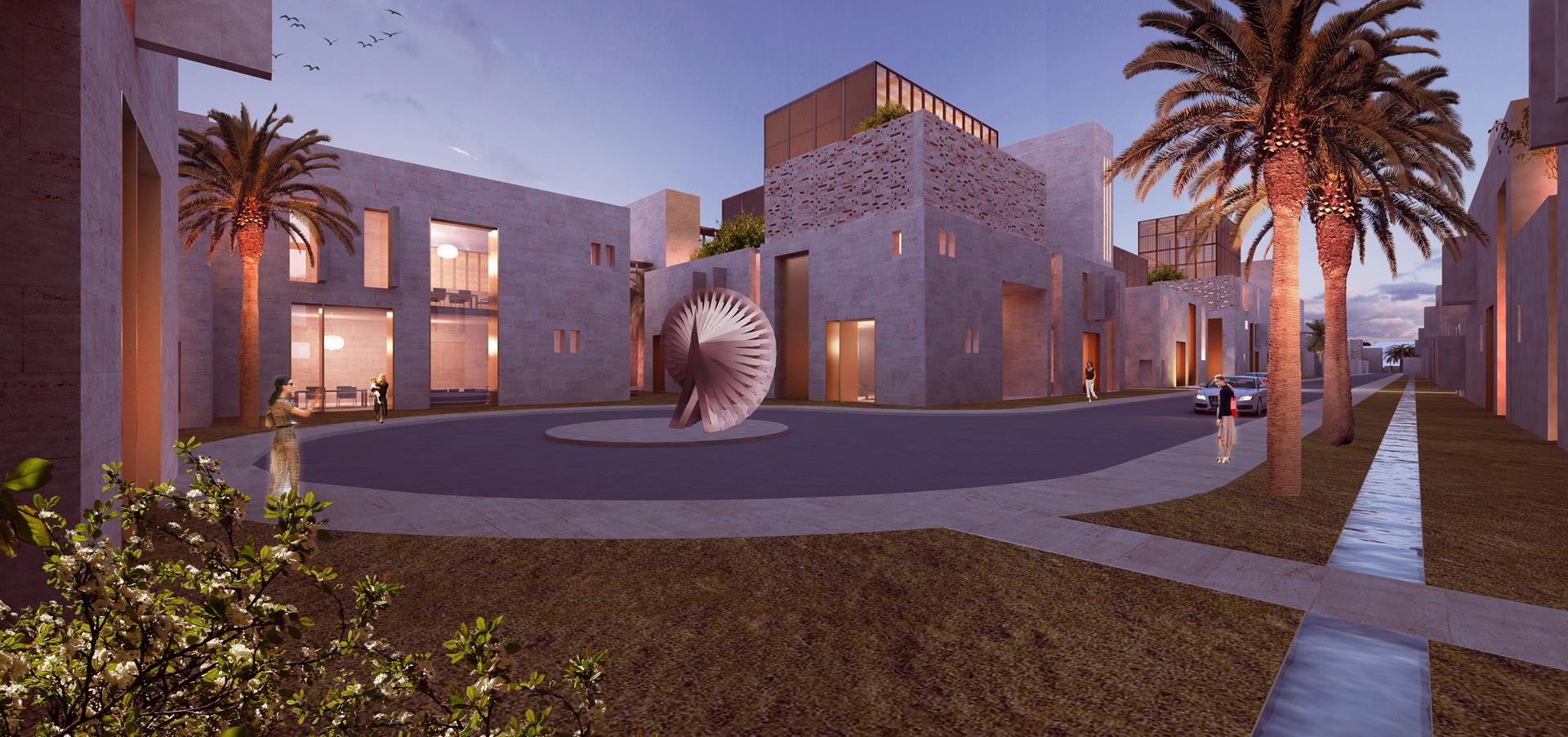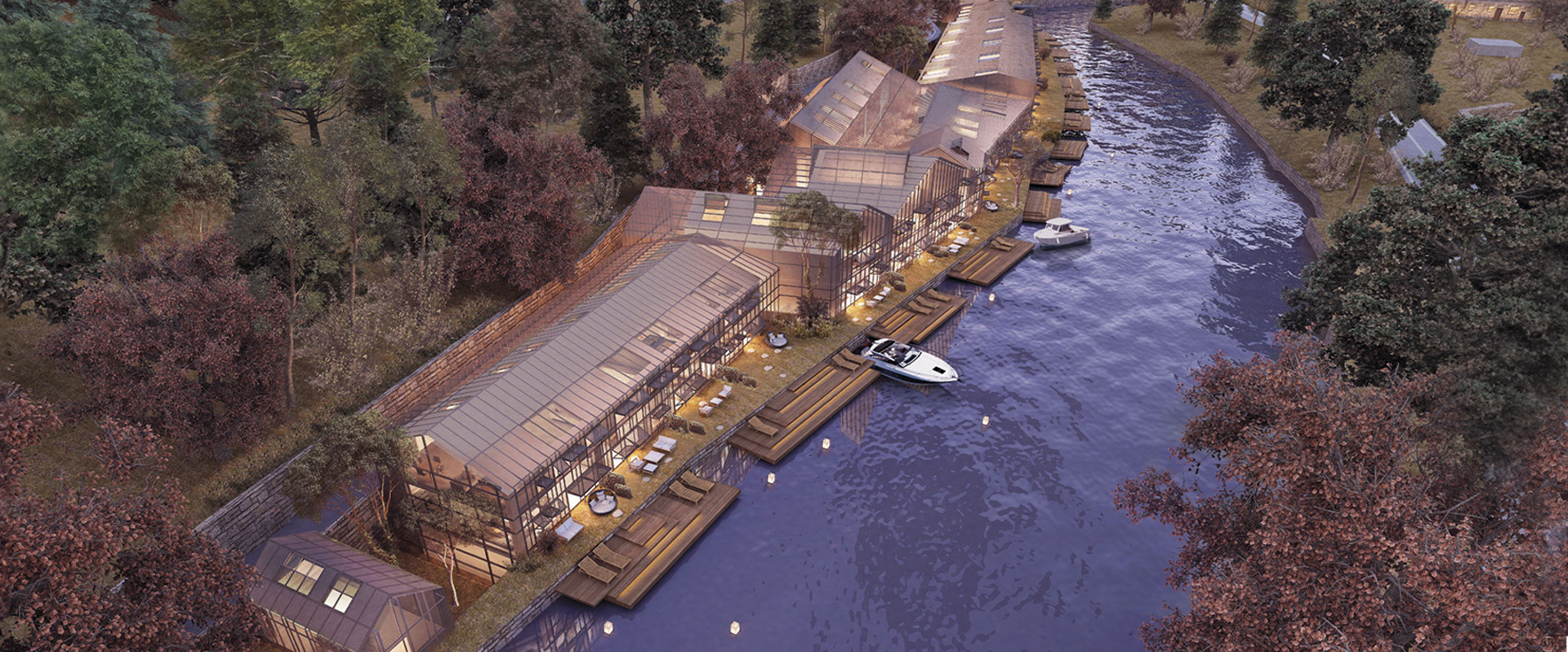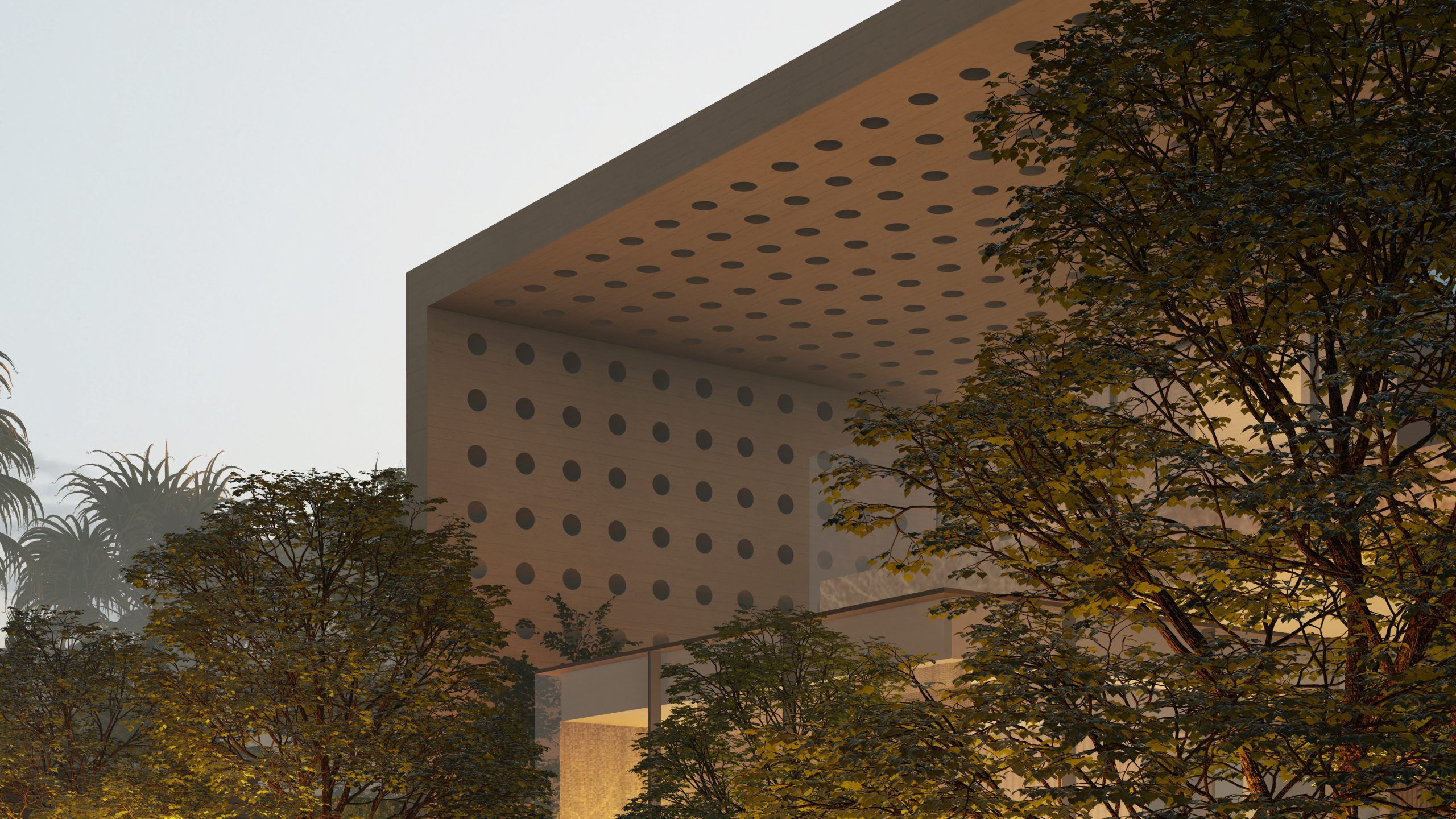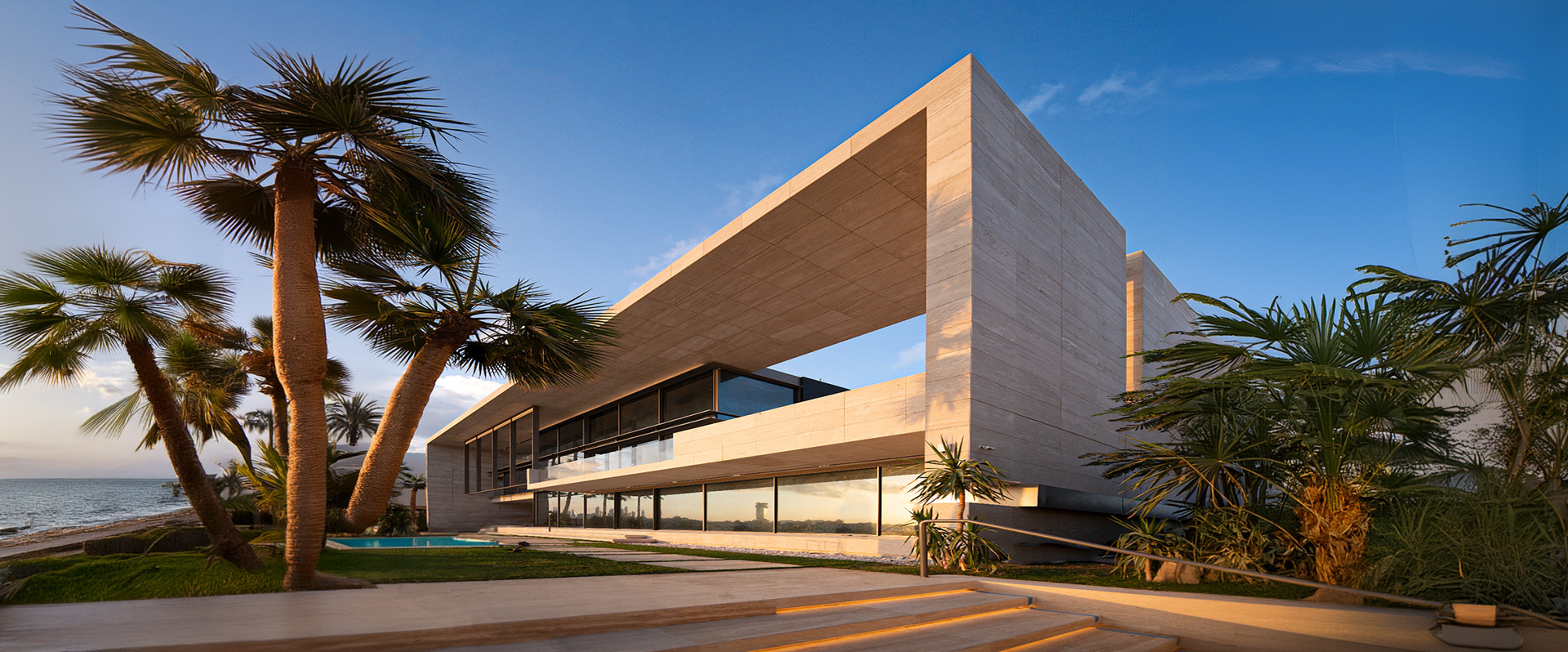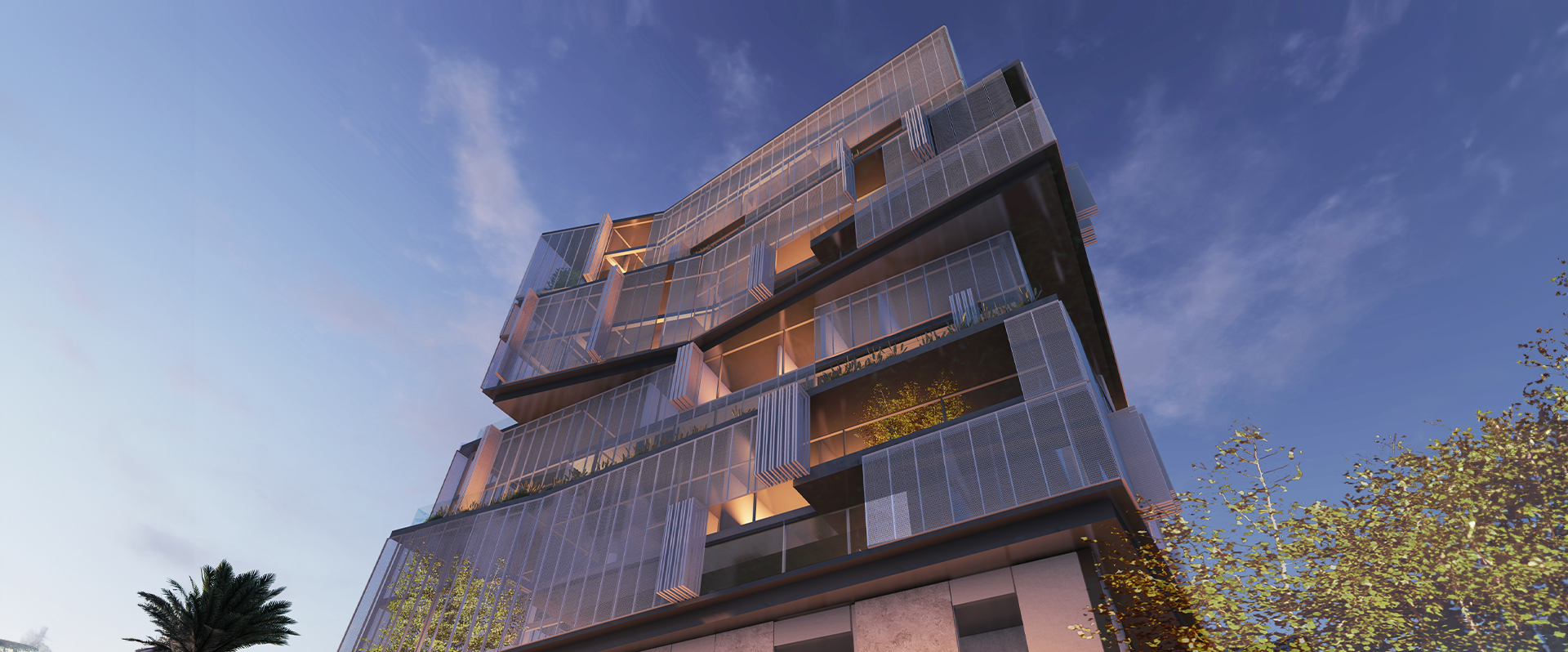Nibras commercial and Residential Complex is intermediary settlement between Western and Omani culture, representing the diversity of spatial styles in a neighborhood organized around a central piazza.
The project sits on the site of a former equestrian center, surrounded by villas and small apartments in Al-Hail, Muscat. Intending to underline the texture of the surroundings and maintain the harmony with its context, the low-rise houses together with the lateral passages were distributed around the elliptical piazza and towards the periphery.
Initially, the nature and building techniques of the Omani house and conventions of creating an urban texture was studied and translated into a modern day urban experience. The traditional courtyard housing is interpreted in the expression of clusters where the systematic arrangement on a regular grid resulted in private gardens or terraces for each unit that through carful orientation provided a balance between privacy integration with the natural surroundings.
Moreover, the Omani identity was articulated through the use of local materials that characterizes Muscat with alternating textures of local stone, both on façades and landscape.
The proposal aims to be a contemporary complement to the historical building culture and a multicultural response to newly adapted ways of living in Muscat.


